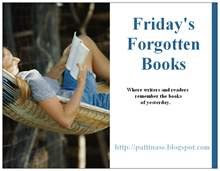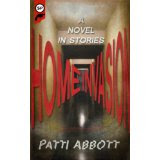John P. Marquand and John O’Hara were the pre-eminent chroniclers of American life in the first half of  the 20th
century; and, in a way, their bodies of work describe the tension that
existed between the privileged WASP class of Marquand’s world and the
second-generation of (predominantly Catholic) Irish, Italian, German,
and Polish immigrants who came of age before World War II and about
whom O’Hara wrote so perceptively. O’Hara’s characters may
not be able to get into the “right” schools or join the “right” clubs,
but with their strength and drive they bring a vitality that two
hundred years of entitlement has leeched out of Marquand’s characters. If
you read O’Hara’s and Marquand’s work side-by-side, you’ll see much of
the American assimilation saga played out there on the page.
the 20th
century; and, in a way, their bodies of work describe the tension that
existed between the privileged WASP class of Marquand’s world and the
second-generation of (predominantly Catholic) Irish, Italian, German,
and Polish immigrants who came of age before World War II and about
whom O’Hara wrote so perceptively. O’Hara’s characters may
not be able to get into the “right” schools or join the “right” clubs,
but with their strength and drive they bring a vitality that two
hundred years of entitlement has leeched out of Marquand’s characters. If
you read O’Hara’s and Marquand’s work side-by-side, you’ll see much of
the American assimilation saga played out there on the page.
 the 20th
century; and, in a way, their bodies of work describe the tension that
existed between the privileged WASP class of Marquand’s world and the
second-generation of (predominantly Catholic) Irish, Italian, German,
and Polish immigrants who came of age before World War II and about
whom O’Hara wrote so perceptively. O’Hara’s characters may
not be able to get into the “right” schools or join the “right” clubs,
but with their strength and drive they bring a vitality that two
hundred years of entitlement has leeched out of Marquand’s characters. If
you read O’Hara’s and Marquand’s work side-by-side, you’ll see much of
the American assimilation saga played out there on the page.
the 20th
century; and, in a way, their bodies of work describe the tension that
existed between the privileged WASP class of Marquand’s world and the
second-generation of (predominantly Catholic) Irish, Italian, German,
and Polish immigrants who came of age before World War II and about
whom O’Hara wrote so perceptively. O’Hara’s characters may
not be able to get into the “right” schools or join the “right” clubs,
but with their strength and drive they bring a vitality that two
hundred years of entitlement has leeched out of Marquand’s characters. If
you read O’Hara’s and Marquand’s work side-by-side, you’ll see much of
the American assimilation saga played out there on the page.
Unfortunately, if John O’Hara is remembered today,
it is as the writer of sexy 1950s blockbuster novels such as
BUTTERFIELD 8 and RAGE TO LIVE (both of which were made into indifferent
movies). But John O’Hara’s real métier was the short story. For
over fifty years, starting in 1927 and ending just before his death in
1970, the prolific O’Hara published more than 200 stories in the New
Yorker alone (not to mention many more stories that appeared in other
publications); in fact, O’Hara was, in large part, responsible for
shaping what we now consider to be the classic "New Yorker short
story.”
The stories in this collection represent that half-century span, the first was originally published in 1927, the last in 1966. They range in length from a couple of pages to novellas. These
are not stories with twists or surprise endings; they are character
studies of people defined and limited both by their own choices and by
social factors beyond their control. Outcomes proceed organically from the interactions of characters and the fundamental underpinnings of their personalities. Many
of them are set in and around the fictional town of Gibbsville,
Pennsylvania, and are narrated by Jim Malloy, the local doctor’s son, a
fictional stand-in for O’Hara. A few others are set in New York or Los Angeles. One
of the best of the L.A. stories is “Nautica Jackson,” about the
devastating revenge committed by a woman who discovers her husband is
having an affair with a movie starlet.
My favorite story in this collection is “Imagine Kissing Pete,” which explores thirty years in a mismatched marriage. Bobbie marries Pete on the rebound in 1929; friends assume the couple will soon divorce. But
the Depression hits, there isn’t money to divorce, then the children
come, and the couple remain married through ups and downs, separations,
the Depression, downward mobility, hard times, the war, and eventual
post-war prosperity. This
is not a happy marriage—there’s heavy drinking (every O'Hara character
seems to easily consume a fifth a day), casual (and not-so-casual)
infidelity on both sides, anger, recriminations, and physical violence,
but the marriage endures. The story ends with Bobbie and Pete attending the graduation of their youngest child from an Ivy League school in 1959.
The
last story in the collection, “We’ll Have Fun,” is one that I wished
would continue and have a happy ending for the main character, a
hard-drinking Irish-American named Tony Costello. Costello
loves and understands horses, picking up odd jobs from horse owners
when he can and spending all of his money on alcohol But
horses are on the way out; the rich owners who used to employ Tony are
now buying automobiles; stables are being converted to garages;
blacksmiths are closing their businesses. Then Tony helps a well-to-do woman who has inadvertently purchased a very sick horse. At the end of the story, Tony and the woman are planning a horse-buying trip together. Tony—despite
his faults—is so committed to his love of horses that I was hoping he
would be able to squeeze a happy ending out of his life. O’Hara
promises no such thing, wisely ending the story before Tony’s drinking
and haphazard lifestyle ruin another opportunity for him.
It’s unfortunate that O’Hara’s short stories are not more widely-read today. In
their subtlety, range, social awareness, and precise dialog, they are a
match for any of the more popular anthologized short stories of the
last century. Anyone
looking for reading material that is both entertaining and meaningful
would not go wrong picking up a volume of O’Hara’s short stories.
















2 comments:
Amen, Deb. O'Hara is one of my all-time favorite short story writers and I've read at least 200 of his stories.
Jeff M.
An excellent writer, well worth reading any time. This is a big heavy book, the only drawback to taking it with you when you are out and about. This might well be a candidate for an e-book, though I don't much like the things.
Post a Comment